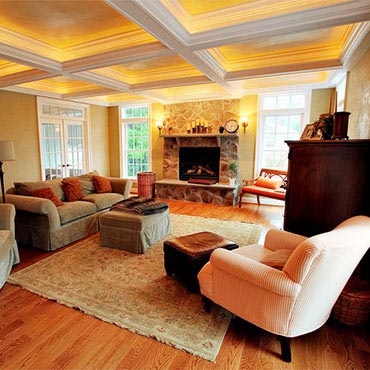

Guide

Kilim rugs is a tapestry rug woven from fairly harsh, thick wool. Kilim artistry is high compared to the price and there is a fantastic variety of Kilim designs. The best prices for kilims are often in long narrow strips rather than room size kilims.

Classic Tibetan designs exemplify our inspired recreations of an antique collection which once adorned the aristocratic estates of Tibet. Woven in Tibet from handcarved and handspun Tibetan highland wool.

Oriental rugs are fine crafted rugs that contribute nicely to any formal or informal setting in your home. Oriental rugs blend wonderfully with contemporary, formal, ornate, casual and traditional decorating styles.

Knotting by hand is most prevalent in oriental rugs and carpets. Kashmir carpets are also hand-knotted. Pile carpets, like flat carpets, can be woven on a loom.

Explore our Reproduction Antique Rugs, crafted to capture classic elegance with timeless appeal. Perfect for adding vintage charm and sophistication to any room.

Dhurries are cotton rugs from India. They come in a huge variety of combinations of light pastels or bright colors. Their patterns are unique and reversible.

The name Aubusson comes from a small town in the Cruse Valley, France. Carpets made in this manner have no pile and are woven with a traditional thick-thread tapestry weave on looms.

Explore Bessarabian Rugs, featuring intricate patterns and rich history. Perfect for adding a touch of classic elegance and craftsmanship to your home.

Discover the elegance of Bokhara Rugs, renowned for their rich colors and traditional designs. Perfect for adding a touch of timeless style to any room.

Discover the unique beauty of Caucasian Rugs with their intricate designs and rich cultural history. Perfect for adding a touch of tradition and elegance to any room.

The centuries-old Chinese textile industry is rich in history. While most antique carpets are classified according to a specific region or manufactory, scholars attribute the age of any specific Chinese rug to the ruling emperor of the time.

Moroccan rug generally have bright bands of color alternating with bands exhibiting geometric and mound like forms. They are frequent in Moroccan rug flat weaves and envoke desert scenes.

If you are looking for a gorgeous needlepoint carpet you may want to see Wiltons. The Wilton power loom weaves the wool and creates the most beautiful patterns. If you like a trellis design or an intricate floral there are many needlepoint to choose from.

Carpet-weaving in Persia dates back to the Bronze Age. Common motifs include scrolling vine networks, arabesques, palmettes, cloud bands, medallions, and overlapping geometric compartments rather than animals and humans.

Muslims are often seen kneeling and prostrating on small embroidered rugs, called "prayer rugs." For those unfamiliar with the use of these rugs, they may look like small "oriental carpets," or simply nice pieces of embroidery.

The Savonnerie rug, aristocrat of rugs of the Western world, was first produced in 1628. The Savonnerie rug has a textured pile, knotted by hand in much the same manner as an Oriental carpet, with a Turkish knot.

Tribal rugs are part of a tradition very different from that of the finely woven floral carpets with which the name Persia has long been associated. Yet tribal rugs have a power and vitality of their own.

Turkish carpets (also known as Anatolian), whether hand knotted or flat woven, are among the most well known and established hand crafted art works in the world. The carpets are always hand made of wool or sometimes cotton, with occasional additions of s

Türkmen carpet (also called "Bukhara Uzbekistan") is a type of handmade floor-covering textile. The original Turkmen rugs were produced by tribes who are the main ethnic group in Turkmenistan and are also found in Afghanistan and Iran.